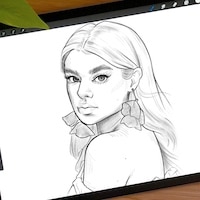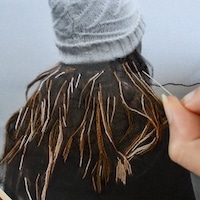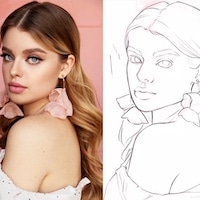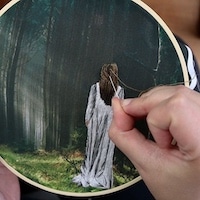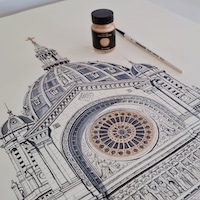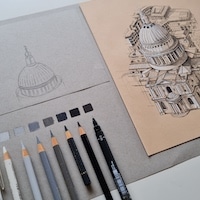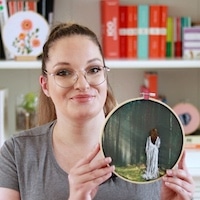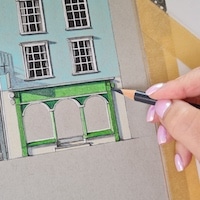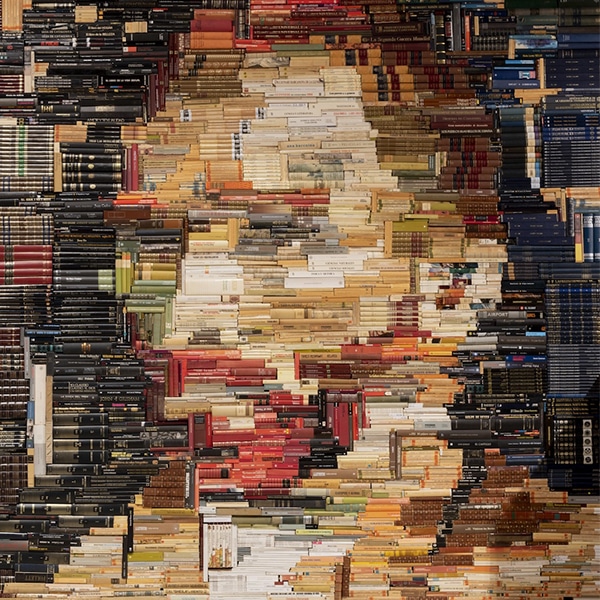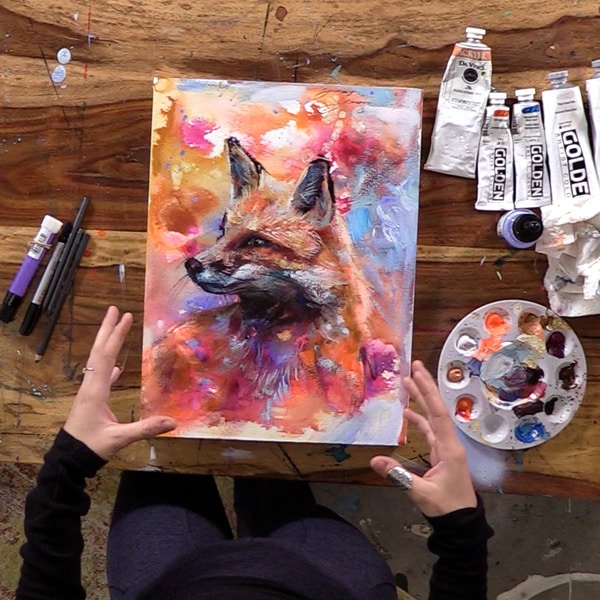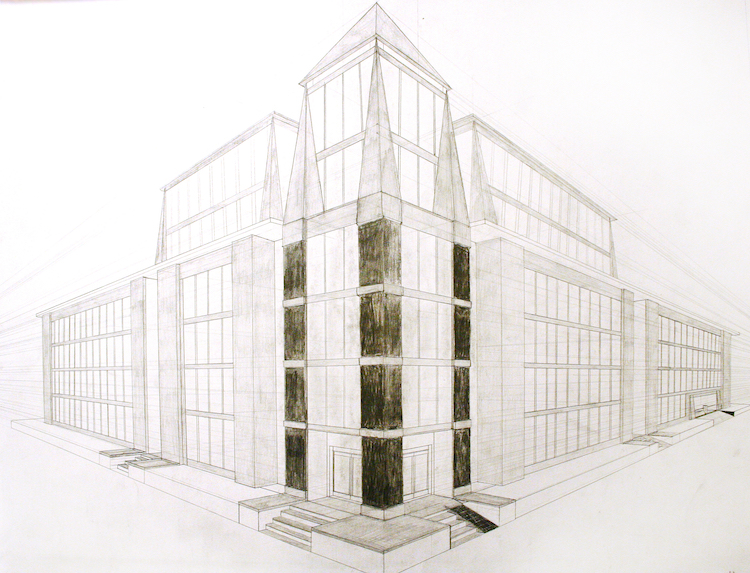
Two-point perspective drawing of a mall (Photo: Stock Photos from Zoltan Major / Shutterstock)
Drawing is full of fundamental techniques that will improve how you create art. And if you like to draw realistically, understanding these methods is vital. Perspective is one of these approaches that will help you become a better draftsperson—especially when it comes to architecture. It creates the illusion of depth to make your work appear more realistic.
What is perspective drawing in art?
Perspective drawing gives objects on a 2D surface a sense of three-dimensionality. There are two types of perspective: linear perspective and atmospheric perspective.
Basics of Linear Perspective
When we talk about one, two, or even three-point perspective, we’re talking about linear perspective. It's a method of representing space in which the scale of an object diminishes as the distance from the viewer increases. Essentially, objects that are farther away from us appear smaller than those that are near. The position at which they meet at a horizon line (the intersection of where the ground meets the sky) is called the vanishing point.
Linear perspective might seem rudimentary but it wasn’t until the Renaissance that it had a name. In 1413, Italian architect Filippo Brunelleschi began developing linear perspective and the method that many artists use today. He started by painting the outlines of Florentine buildings in a mirror and saw that when the structure’s outline was continued, the lines ended on the horizon line.
Brunelleschi’s discovery was a major influence on artists at the time. Many years later, his friend Leon Battista Alberti penned De Pictura, the first treatise on linear perspective that explained how to correctly show distance in a painting using mathematic principles first proven by Euclid in ancient Greece.
One-Point Perspective
One of the best illustrations of single-point perspective is to imagine that you’re looking at eye level at a straight road. All of the elements and angles of the composition—particularly the road itself—will converge at a single point on the horizon line, or horizontal line on the page.

Photo: Francisco Delgado
Single-point perspective can be at any point along the horizon line; the only stipulation is that all lines lead to the solitary point. Although elementary, it is evident in iconic works of art.
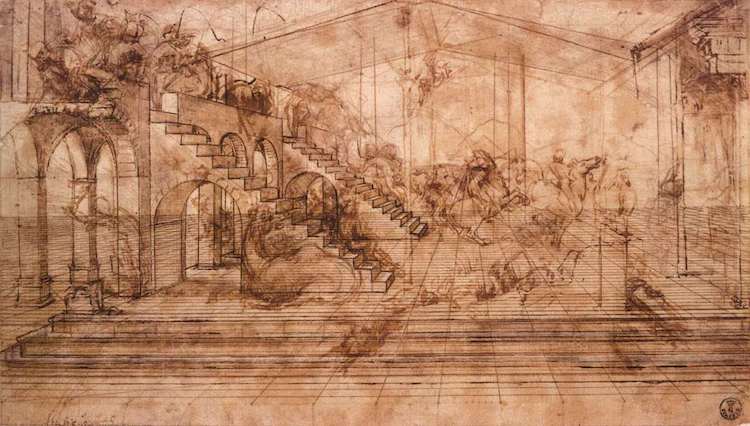
Perspectival study for “The Adoration of the Magi,” c. 1481
Leonardo da Vinci best exemplifies this in his perspectival study for The Adoration of the Magi around 1481. This incredible sketch demonstrates the great lengths that da Vinci went through to determine the focal point of the piece. Notice how the lines, from the steps to the arches, all converge at the same spot on the horizon line.
Two-Point Perspective
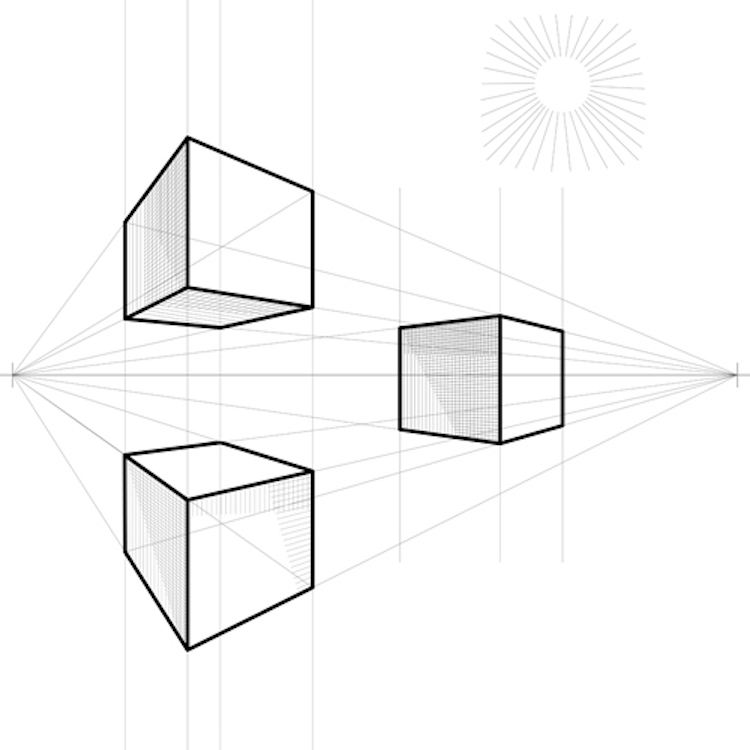
Cube in two-point perspective (Photo: Stock Photos from kavalenkava / Shutterstock)
Just as one-point perspective focuses on one vanishing point, two-point perspective ushers in a second one. Typically, these two points are at the opposite sides of the composition, such as one on the far left and another on the far right. Two-point perspective has vertical lines that are perpendicular to the ground plane. For example: think of the sides of a building as the vertical lines and the sidewalk as your ground plane.
Three-Point Perspective
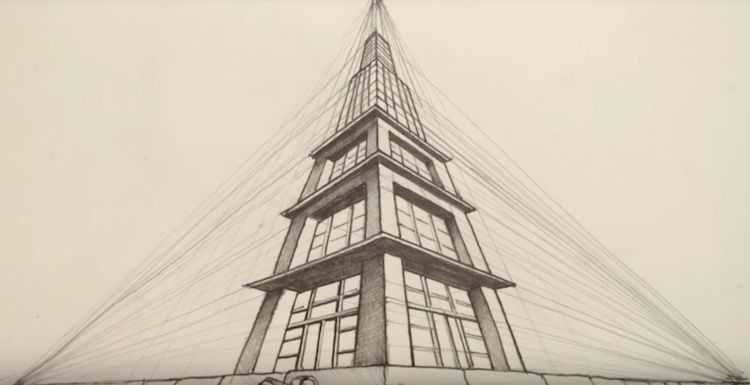
Image: Circle Line Art School
Three-point perspective, also called multi-point, is a type of perspective that has at least a third vanishing point. This is common, especially as the complexity of the subject matter grows. A standard setup features two vanishing points on the far left and far right of the composition and then the third point below them. Doing this gives you a bird’s eye view of the subject. If you were to place the third point above the two vanishing points, it would create an extreme view looking upwards.
Introduction to Atmospheric Perspective
Linear perspective is based on mathematics and straight lines, but atmospheric perspective relies on something entirely different. Also called aerial perspective, it conveys depth through value changes, colors, and visual clarity.
One of the best ways to illustrate atmospheric perspective is in a landscape photograph. Imagine you’re viewing a mountainscape far in the distance. The formations closest to you will look the most colorful and in the greatest detail. As the mountains appear farther away, they have a dull, bluish cast covering them.

Photo: Guillaume Briard
How does this happen? In atmospheric perspective, water, vapor, and even smog affect what you see. As there’s more distance between you and a form, the increased particles result in less visual contrast. It also has to do with color wavelength. Blue color waves tend to bounce around these particles, which is why things take on this hue from long distances.
View this post on Instagram
This idea, that things closer to you are brighter and easier to see, goes hand-in-hand with values in compositions. Things that are in high contrast (a combination of light tones and dark tones) are more eye-catching than low contrast. In the above painting by artist Adem Potaş, the trees in the backdrop practically disappear because their tone is nearly the same as the rest of the sky.
Learn How to Create Your Own Perspective Drawings
Now that you’ve been introduced to the basics, it’s time to practice your perspective drawing.
Drawing Linear Perspective: One, Two, and Three points
Circle Line Art School has created three in-depth videos that explain how to draw with one or more vanishing points. Each tutorial is narrated step-by-step and demonstrates sketching a building (or buildings). All you need is drawing paper, your favorite set of drawing pencils, an eraser, and ruler.
Tips on How to Incorporate Atmospheric Perspective in Your Work
Artist Lineke Lijn explains how she creates atmospheric perspective in her work and how you can incorporate it into your work, too.
Need more inspiration? Here's some art we love that features perfect perspective.
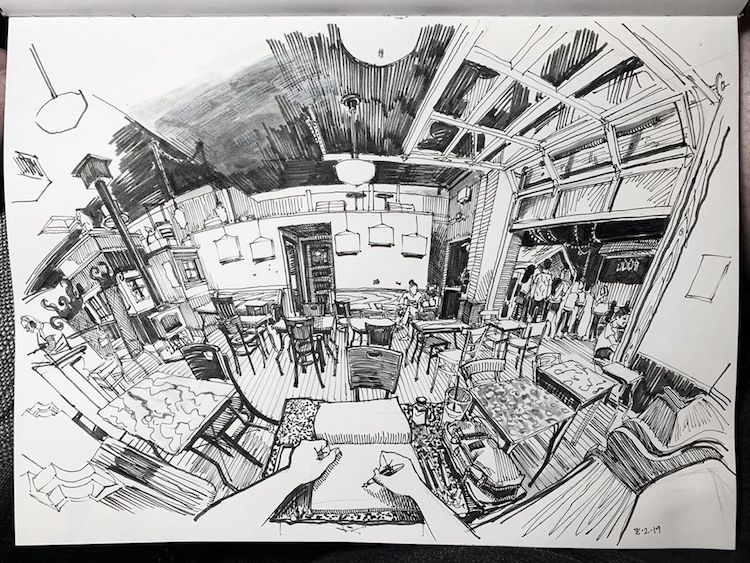
Artist: Paul Heaston
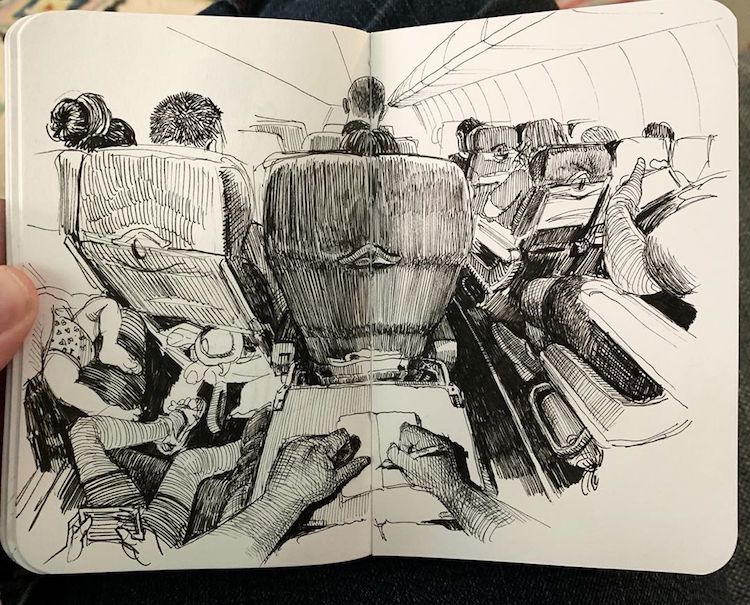
Artist: Paul Heaston

Palace of Westminster, London. Artist: Lorenzo Concas
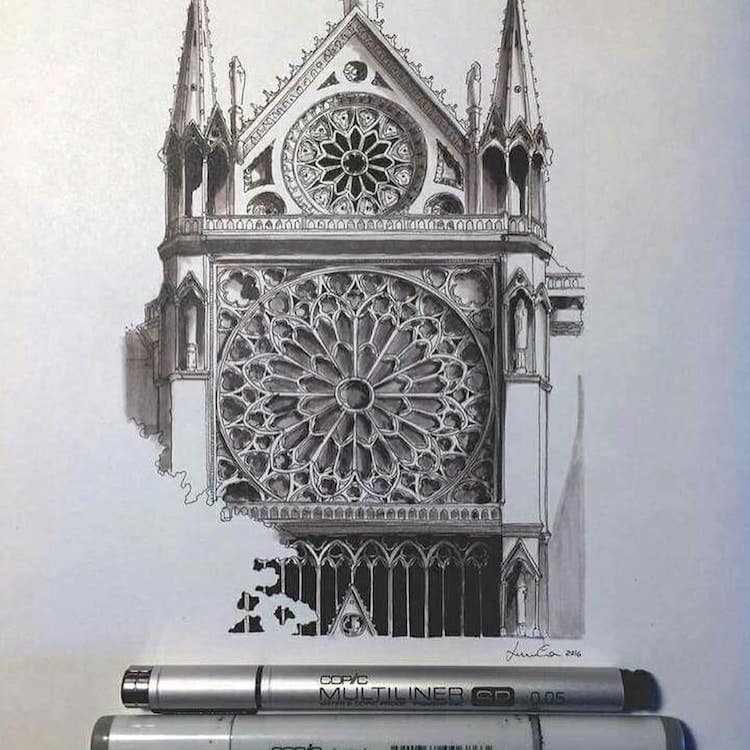
Notre-Dame Cathedral, Paris. Artist: Lorenzo Concas
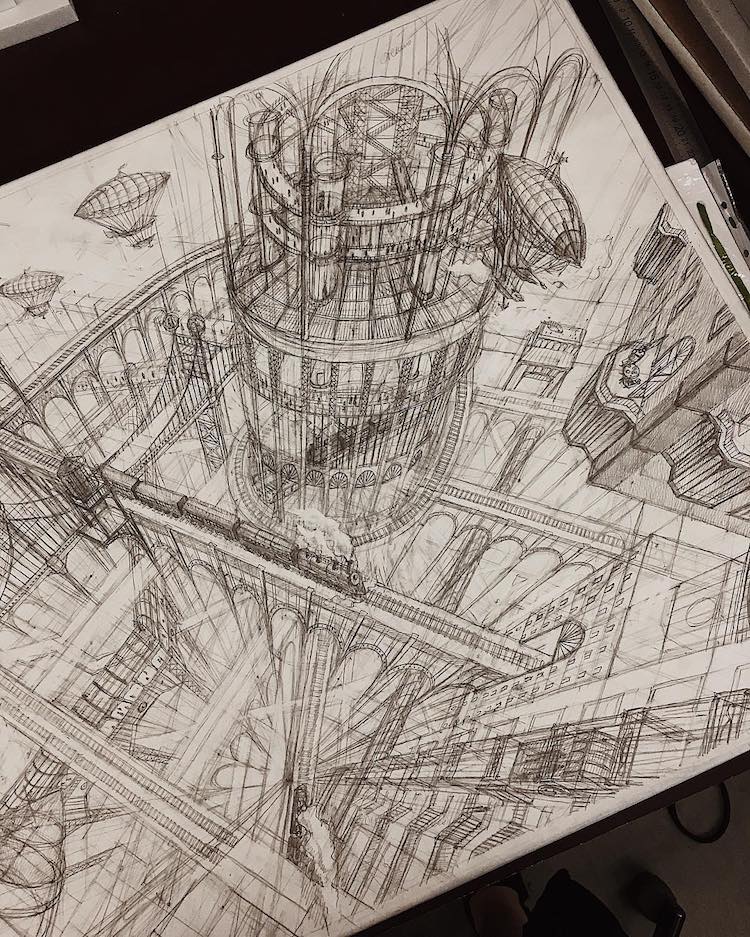
Artist: Aysylu Zaripova
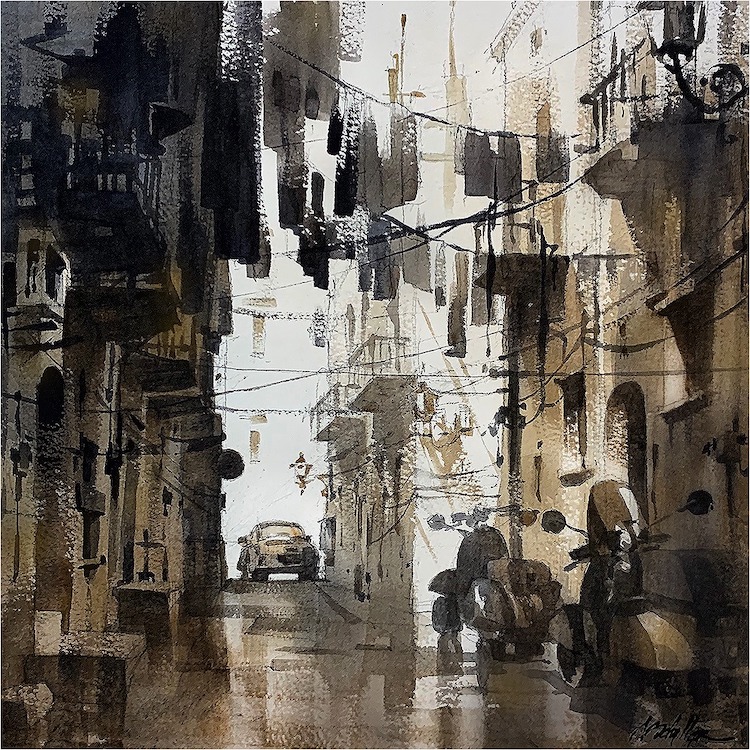
Artist: Thomas W. Schaller
View this post on Instagram
Want to learn more? Here are five practical drawing tips to take your art to the next level.
Related Articles:
Artist Creates Meticulously Detailed Ink Drawings of Architecture Around the World
New to Drawing? Make Sure You Know These Basic Techniques Before You Start



